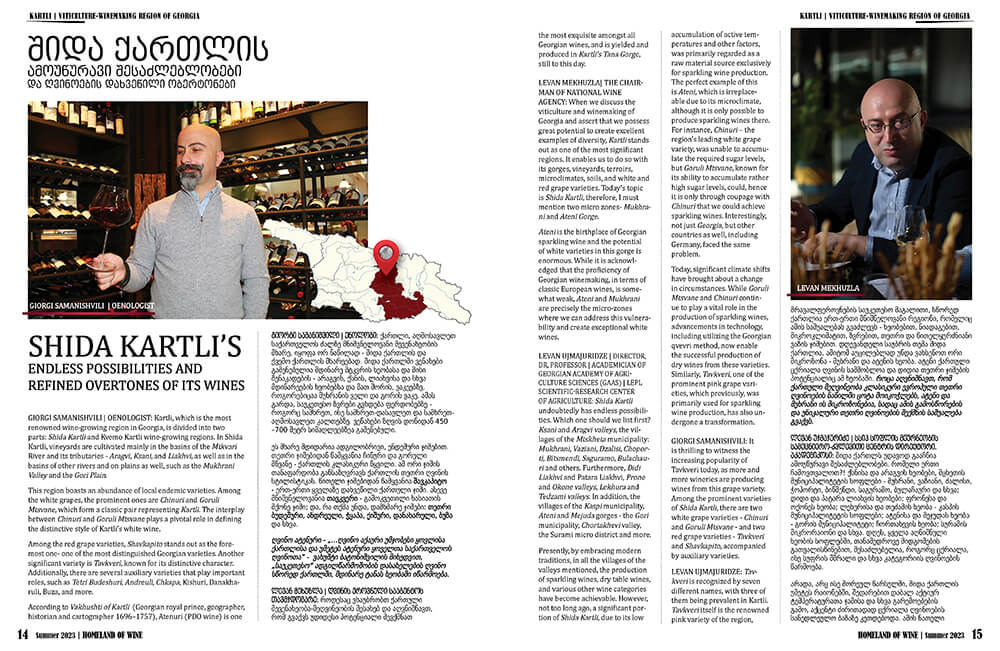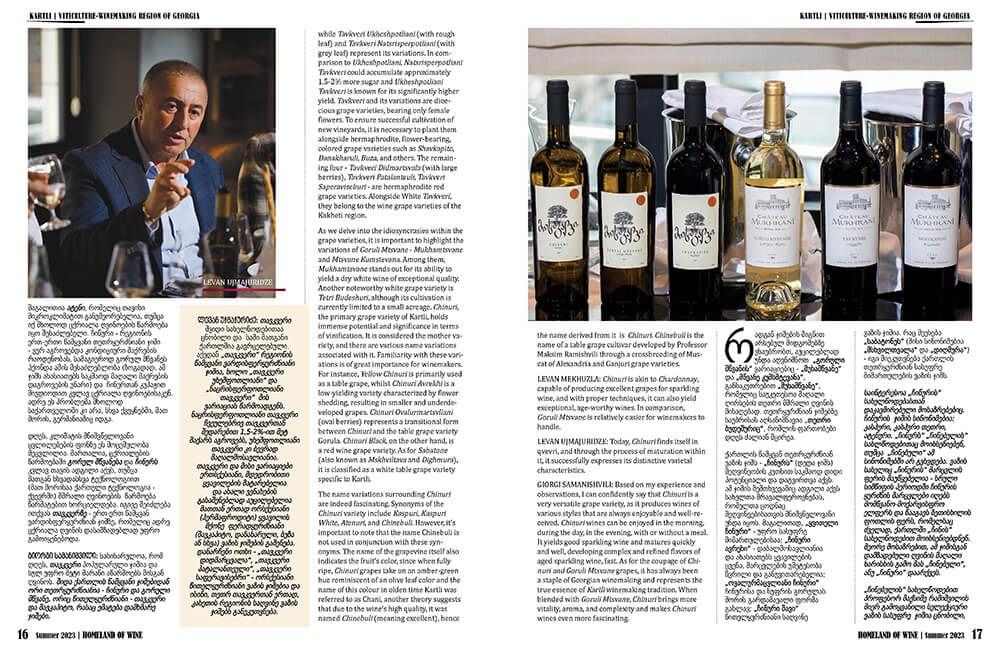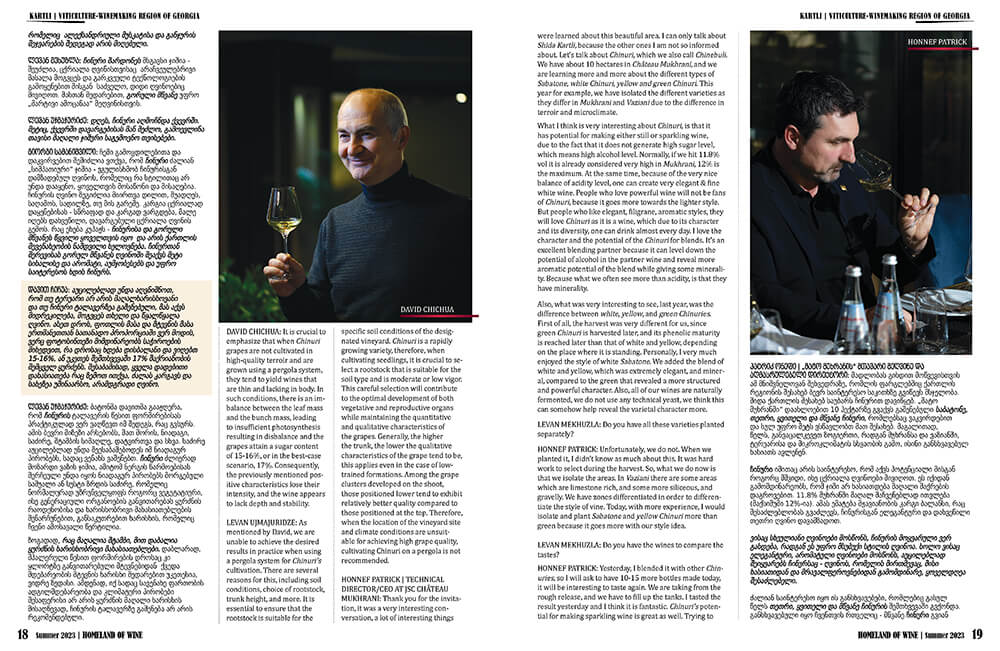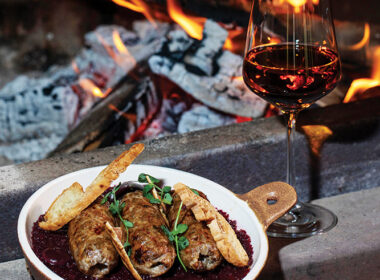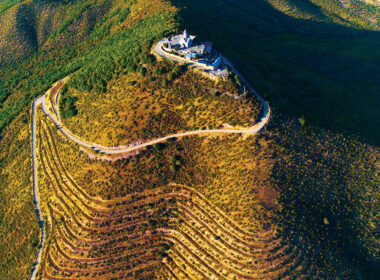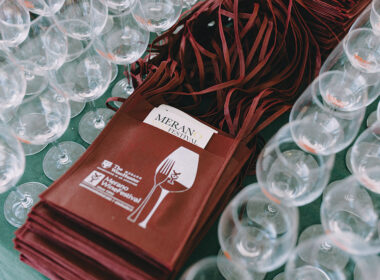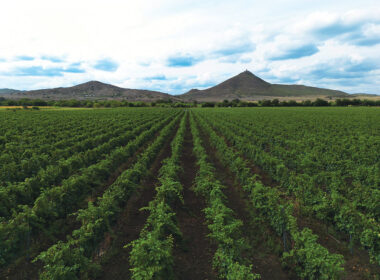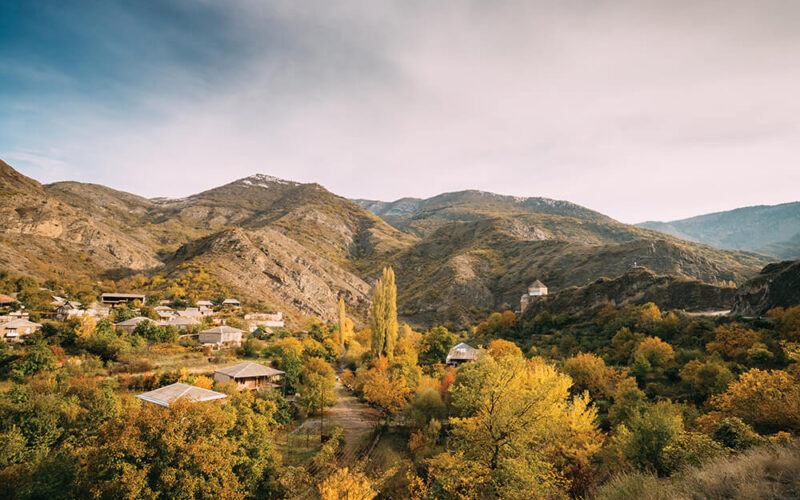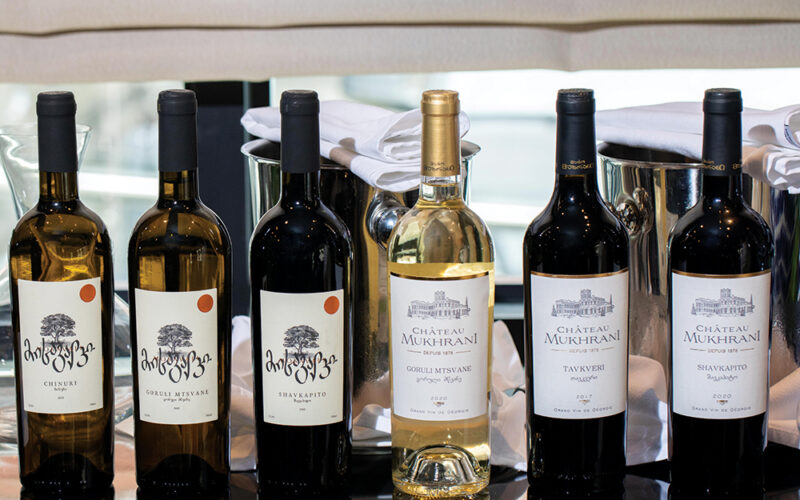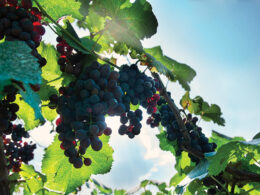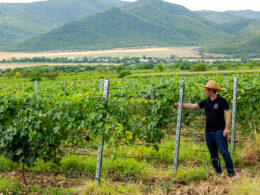| Part II |
Levan Ujmajuridze: The renowned viticulture micro-district of Saguramo-Bitsmendi, also known as Little Kakheti, continues to witness active plantation of new vineyards, attracting both small family wineries and large companies. Another significant aspect is the presence of a well-established base of perennial crops at the Agricultural Scientific Research Center in Jighaura. This center serves as a valuable example for winegrowers, showcasing innovative agro-technologies and a diverse range of grape varieties.
Similar developments are taking place in the surrounding villages of Samachablo, where the red grape variety Shavkapito has historical roots, along with other varieties like Kurta’s Vardisperi. The village of Marana has witnessed extensive restoration of Shavkapito vineyards, spreading across hundreds of hectares. These vineyards now also feature Goruli Mtsvane, Budeshuri Tetri, Buza, Danakharuli, and other red grape varieties specific to Kartli, such as Kartli Saperavi, Mejvriskhevi Saperavi, and Partala Shavi. Additionally, the red grape variety Kapita is worth noting for its juice that exhibits a black cherry tint. We are not overly spoiled with colored varieties.
In Kartli, three widely cultivated Saperavi grape varieties can be found: Ateni Saperavi, Mejvriskhevi Saperavi, and Kartli Saperavi. The first two varieties produce wines of medium quality. However, Kartli Saperavi attains a rather high sugar level (21%-22%), which consistently contributes to its refined organoleptic profile. In terms of qualitative characteristics, it surpasses both Saperavi varieties and exhibits a more intense color. It is encouraging to see vineyards being cultivated in Shida Kartli, not only with the region’s traditional, leading varieties, but also with newly introduced ones that were given an opportunity after thorough research at the Jighaura research center. We have studied these varieties, produced varietal wines from them, and assessed their potential.
As a result of the revitalization of these micro districts, I am confident that many of them will soon qualify for registration as PDO (Protected Designation of Origin) micro zones. This is due to the diverse soil conditions, microclimate, and distinctive varietal characteristics.
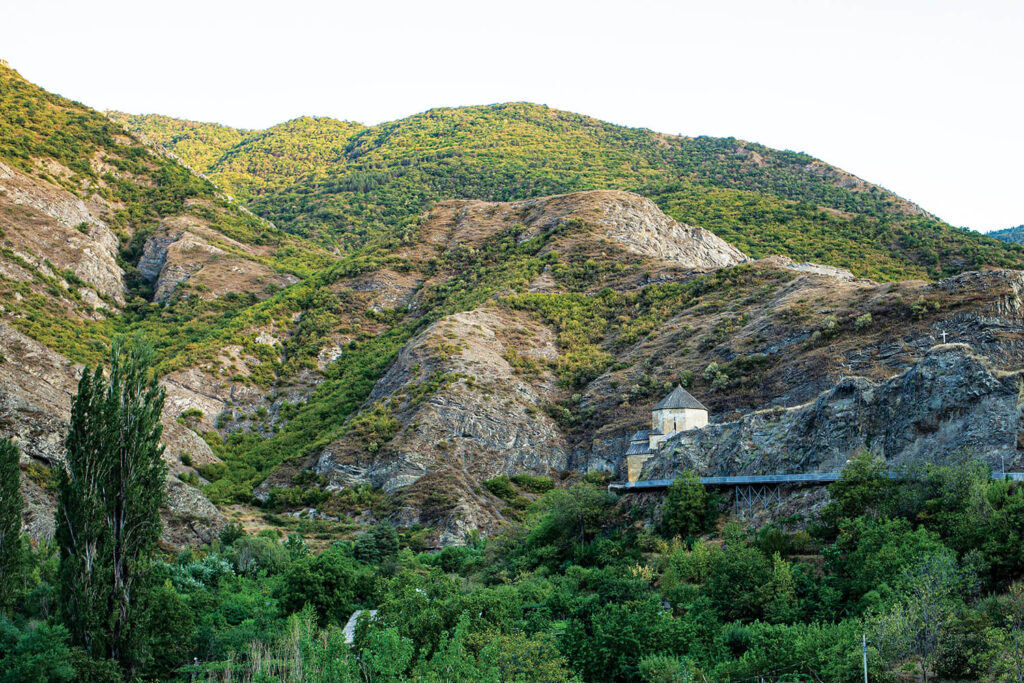
David Chichua: When discussing the varieties of a particular region, it is important to acknowledge not only their positive qualities but also the associated risks. In the case of Kartli’s two prominent white grape varieties – Chinuri and Goruli Mtsvane – we encounter distinct risks that set them apart from each other. The Goruli Mtsvane grape variety tends to accumulate sugar rapidly. Its sugar level consistently surpasses its organoleptic maturity, creating a dilemma for winemakers. If their intention is to produce a traditional white wine, it is preferable for the sugar content to remain below 21 as anything above 22 is considered critically high. With climatic changes, such as from Okami to Mukhrani or within the micro-zone of Saguramo-Bitsmendi, when the sugar content reaches 20 to 21, only green vegetative notes are detected in the aromas rather than ripe fruits. If the winemaker chooses to wait for the aromas to fully develop, it may result in higher alcohol content.

Giorgi Samanishvili: At times like this, a good solution is a coupage with Chinuri.
David Chichua: I agree with Giorgi that blending these two varieties – Chinuri and Goriuli Mtsvane with each other allows us to maximize the aroma of the wine, while the alcohol remains at an acceptable level.
Pure varietal wines, which are not traditionally produced in Kartli, pose more challenges. For instance, Ateni Chinuri and Ateni Goruli Mtsvane, have historically not been vinified separately, but nowadays, many winemakers are enticed to do so.
The situation became notably more problematic with Goruli Mtsvane when winemakers began fermenting it with skin contact. Unlike other varieties like Khikhvi, Rkatsiteli, Kisi, and Kakhuri Mtsvane, Goruli Mtsvane does not develop fully ripe tannins. Instead, its tannins remain underripe, displaying green, vegetative, and coarse characteristics. This flaw becomes more pronounced when grapes are harvested earlier, to avoid excessive sugar levels. In contrast, Chinuri, unlike Goruli Mtsvane, exhibits relatively flavorful and balanced tannins after skin contact fermentation.
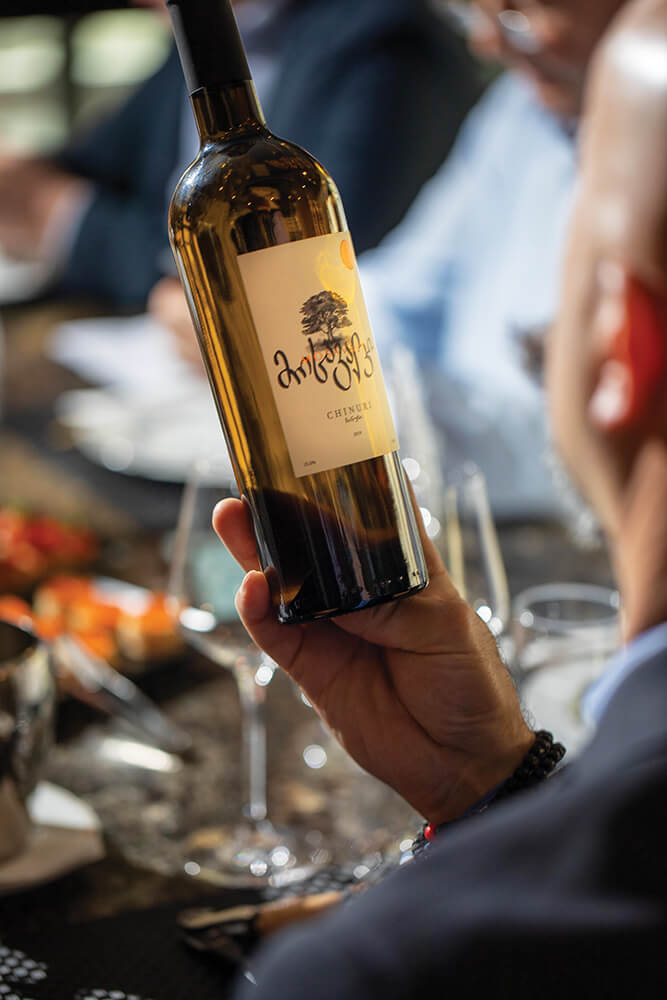
Levan Ujmajuridze: To ensure Goruli Mtsvane expresses its varietal aromas, it is crucial to focus on soil composition, appropriate rootstock selection, vertical zonality, and agrotechnology. These factors collectively address the challenges mentioned.
Giorgi Samanishvili: Consequently, we unanimously recommend the cultivation of vineyards on slopes.
Levan Ujmajuridze: Also, for the height to be above sea level, due to global warming.
Giorgi Samanishvili: We should certainly highlight other varieties, such as Budeshuri Tetri. On its own, Budeshuri Tetri is a semi-table grape variety, known for its visually appealing clusters and grapes. However, it may be less intriguing for winemaking purposes. Nevertheless, it can significantly enhance wines when blended with Chinuri and Goruli Mtsvane. Traditionally, Tetri Budeshuri has always been a component of the Atenuri coupage. Another noteworthy variety is Chkapa, which stands out with its exceptionally smooth flavor and balanced acidity.
David Chichua: While it is true that Chinuri and Goruli Mtsvane are undoubtedly the preferred white grape varieties of Kartli, it is essential not to overlook the significance of other grape varieties. Take Chkapa, for instance, which deserves notable attention as an independent player in the region, or Tetri Budeshuri, which, as a variety to be considered for blending, offers a distinct aromatic profile, and introduces the essence of overripe yellow fruits to the wine. In contrast to Goruli Mtsvane, which exhibits fresh, citrusy notes with a hint of herbaceous Sauvignon Blanc-like quality when harvested early, Tetri Budeshuri presents sweet and ripe aromas reminiscent of white cherry jam. It leaves the lingering impression of raisins and white mulberries.
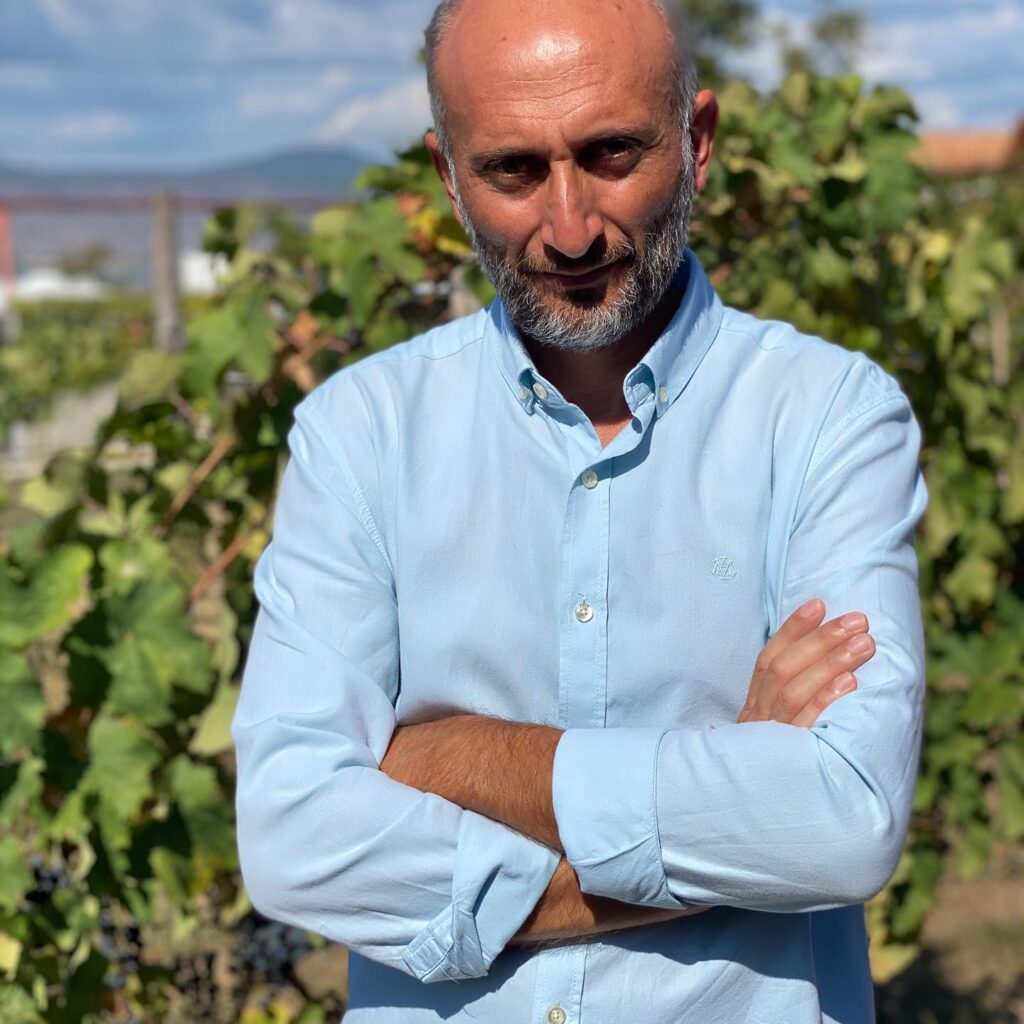
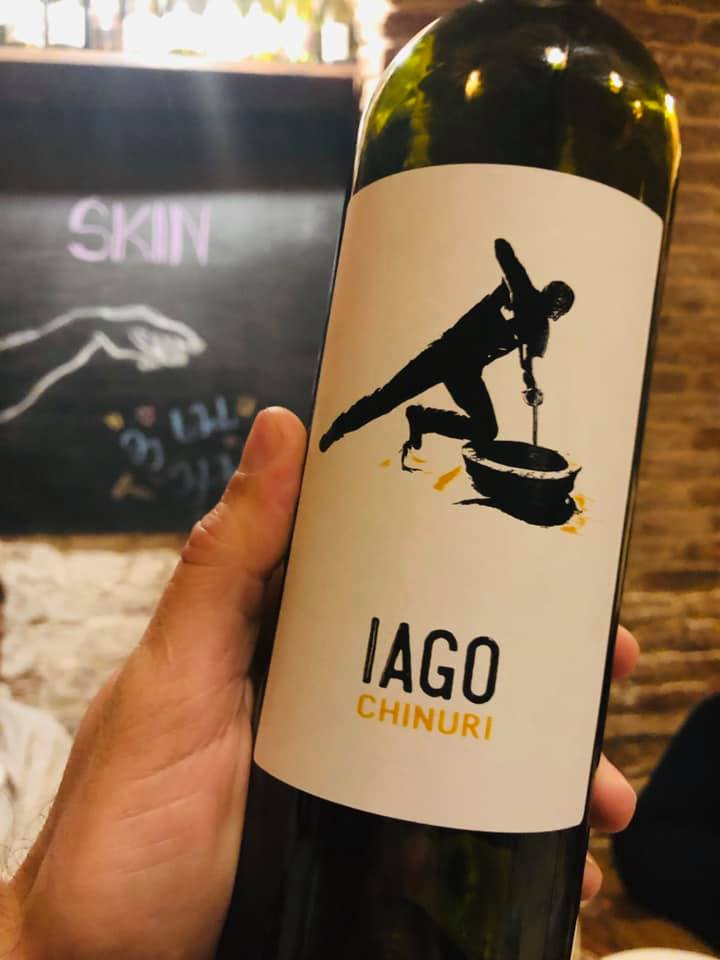
Iago Bitarishvili| The Founder of Iago’s Wine: Kartli undeniably holds immense potential, as emphasized by Levan Mukhuzla earlier. What forms the foundation for this claim? The region’s remarkable combination of diverse grape varieties and its advantageous geographical location.
Based on my observations, both Kakheti and the western regions of our country possess distinct characteristics, while Kartli, geographically situated in the heart of Georgia, presents a unique advantage, since such a location allows the production of traditional (fermented and aged with skin contact), classic, and Imeretian wines, utilizing the same grape variety. Additionally, Kartli offers the potential for crafting sparkling wines as well. Hence, I firmly believe that Kartli will gain broader recognition in the future, both within the local market and through increased export opportunities which serves as a crucial prerequisite for the advancement of the viticulture and winemaking within the region.
David Chichua: I must acknowledge that Iago’s compelling and self-contained story has inspired many winemakers in Kartli to follow suit. Consequently, several producers in the region have started experimenting with less common winemaking styles for the region, such as full skin contact fermentation. However, it is worth noting that Kartli’s traditional winemaking approach has historically involved fermenting the juice without the presence of skins.
Giorgi Samanishvili: This fact is supported by census records dating back to the early 20th century, which indicate that fermenting the must without the presence of skins was a customary practice in the Kartli region.
David Chichua: Certainly, we should not impose limitations on individual winemakers as they have the freedom to choose their preferred winemaking methods. However, it is important to recognize that the excessive production of skin contact wines in Kartli poses a potential risk of diluting the region’s authenticity.
Giorgi Samanishvili: Tavkveri is undeniably one of the most challenging grape varieties to cultivate and vinify. Winemakers must carefully consider their desired wine style before deciding how to approach it. In literature, Tavkveri has often been categorized as a “lower quality” variety, primarily due to the perception that it is not suitable for producing age-worthy wines. However, I am pleased to observe an increasing number of examples made from this variety in recent years.
David Chichua: Indeed, Tavkveri is commonly associated with light, varietal red wines, and rosés, but it also holds great potential for producing wines in different styles.
Giorgi Samanishvili: As for Shavkapito, this variety doesn’t like blending, which can be considered a favorable characteristic. It excels when vinified as a single variety, fully expressing a refined and distinctive character. Undoubtedly, Shavkapito stands out as one of the most significant and high-quality red grape varieties in Kartli.
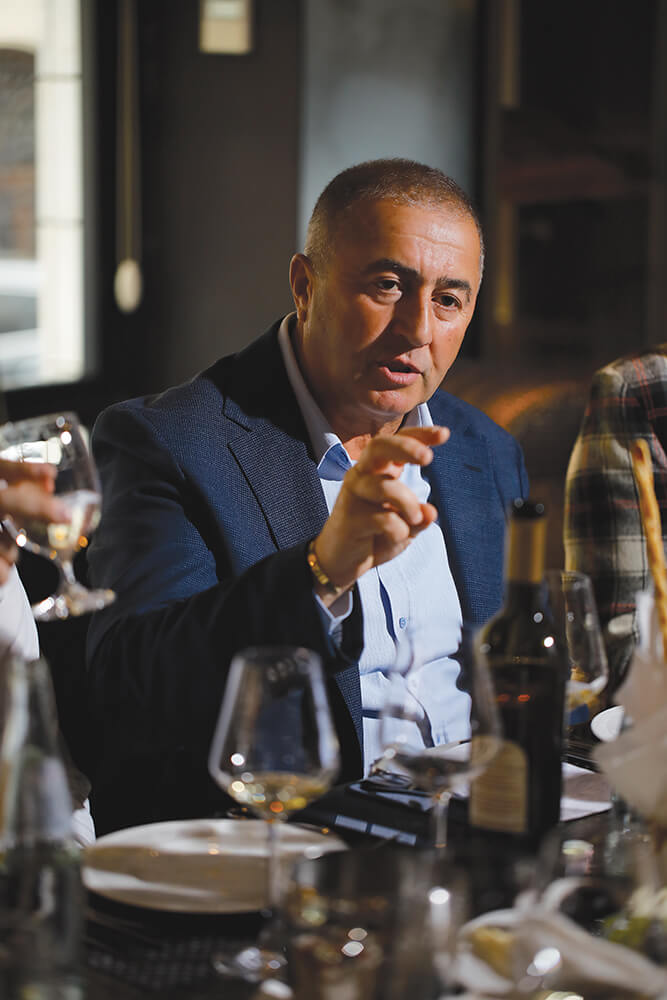
Levan Ujmajuridze: Shavkapito has an intricate history. Fortunately, the demand for this variety is currently on the rise, leading to active cultivation of new vineyards. The variety was brought from Shida Kartli to Kvemo Kartli by the Germans, who named it Blaoholzer, (with blue horn). According to Ivane Javakhishvili (Georgian historian and linguist, 1876-1940), Shavkapito exhibits close resemblance to other varieties such as Shavi Kapistoni, Kapito and Kapita in terms of ampelographic and agricultural characteristics. Furthermore, it is possible to produce high-quality products from Shavkapito even when cultivated above sea level.
David Chichua: Shavkapito can initially present a simple and berry-like profile, but through the usage of sweet spices and oak, we have the opportunity to elevate its character, making it richer and more intriguing. The variety demonstrates harmonious development when aged in barrels, ultimately yielding a favorable outcome in the resulting wine. Villa Mosavali’s Shavkapito, the variety we sampled today, serves as a remarkable representation of terroir, displaying vibrant aromas and a well-balanced acidity. It is evident that this variety thrives in a cool growing environment, which suits it exceptionally well.
Giorgi Samanishvili: As previously mentioned, Shavkapito is not suitable for coupage. When working with this variety, winemakers must invest considerable effort and attention into various aspects, including site selection, grape ripening, and winemaking techniques. Long maceration plays a crucial role (but it is essential to avoid excessive extraction), malolactic fermentation, and the protection of the wine from oxidation. This variety consistently requires meticulous attention, but the result is the production of refined wines. Naturally, selecting the appropriate vineyard site and ensuring sufficient phenolic ripeness of the grapes is most important.
Levan Ujmajuridze: That is why the winegrower’s role is to create the wine in the vineyard, while the winemaker’s task is to transfer it, unadulterated into the glass.
David Chichua: It is worth mentioning that foreign grape varieties have shown remarkable results in Kartli, such as Pinot Noir, Chardonnay, and Aligoté. Interestingly, there are certain similarities that can be drawn between Pinot Noir and Shavkapito.
Levan Ujmajuridze: And what was the reason for importing these varieties?! Blending material for sparkling wines.
Giorgi Samanishvili: Aligoté, which is not typically regarded as a high-quality variety in Burgundy, was used more successfully in Georgia.
Levan Mekhuzla: Patrick, I know that you were focused on making blends instead of single variety wines, in my opinion, I think that single variety wines are not really the future of traditional wine making in a country like Georgia. But rather more blends and more varieties that complement each other in this particular sub-regional micro zone. Wouldn’t you agree?
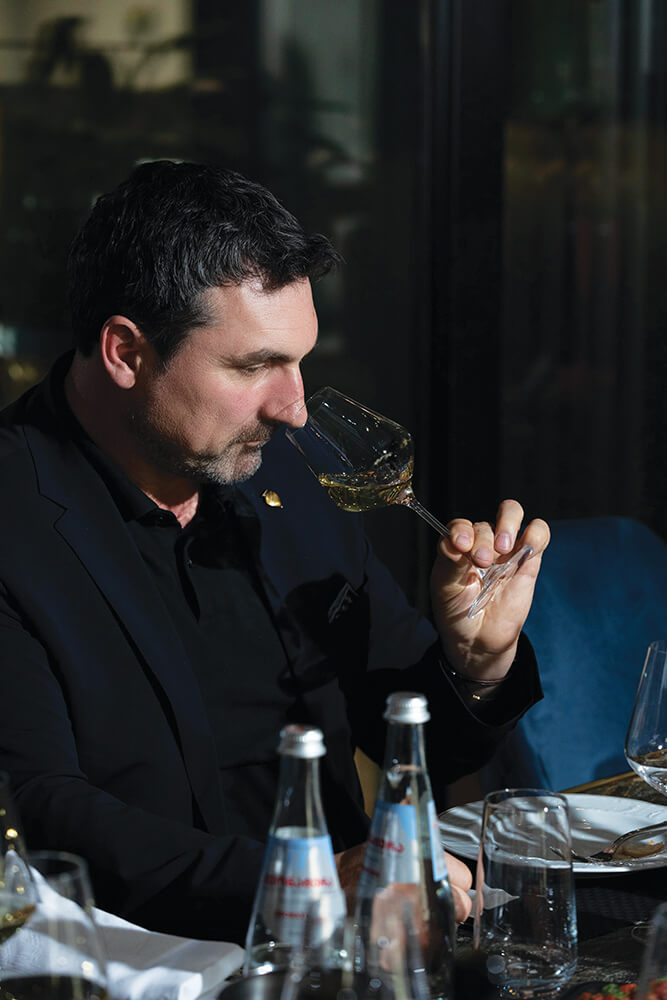
Honnef Patrick: It is a very interesting topic for sure. First of all, it is a matter of personal orientation. I think there is a lot of potential for blending in Georgia, I think it depends on the place, on the variety, and the principle of a single variety which is also very important in order to represent the country or the region. In our studies, we are trying to show what is the alternative potential of blending, for example Tavkveri. Tavkveri is a good example for me, which I love. Tavkveri is also the most confusing for a lot of our consumers, as they don’t understand Tavkveri directly with its style of low alcohol and strong tannin, which we have to balance. So, I often think about whether Tavkveri is better as a single variety, or as a blending partner, as it is fantastic to blend with Saperavi and with other varieties. Shavkapito, I don’t see so much in blends, for example, because I tried it. And one needs a strong dosage of Shavkapito, as if you put Shavkapito in too low a dosage with Saperavi, you can’t feel it, it is disappearing. Shavkapito, I will not see as a blending partner, but to others I am open to, and I think we can experiment with that. It also depends on your target market, if they are looking for more single varieties and not so much for blends. But I think there is a big potential for blending in Georgia, for example, one I love very much, but I think is totally undeveloped today and we have to understand better is- Dzelshavi. Dzelshavi can make something very interesting- or Otskhanuri Sapere, I rarely drink it ripe, as it is very often too disbalanced, not phenolic ripe, and very high in acid, but it can make outstanding wine and we have to understand it more. Dzelshavi is a fantastic blending partner as well, if you don’t get the structure, because sometimes it is very difficult with the structure to get the right blend, perhaps with Otskhanuri or Ojaleshi… so I think it shouldn’t be closed to development.
Levan MekhUzla: Patrik, how long did it stay it the oak barrel?
Honnef Patrick: It depends, mostly it is the bigger barrel 400-500L because it is 50% stainless steel and 50% oak, but Tavkveri is the variety that needs oxygen, during the aging process. Like Cabernet Sauvignon, Tavkveri consumes a lot of oxygen and Cabernet Sauvignon in stainless steel cannot develop the full depth of the complexity of the variety. Personally, I think Tavkveri is the same, but it is quite a tannic wine, we have to take care as well with maturity level. We have to make sure it doesn’t have too much oak content because it is reinforcing the tannic structure. That’s why we are going with 500 litres casks, it is more interesting as well for micro-oxygenation. Today, we have it in Qvevri, standing in the winery to age without skin, because we have oxygen exchange, but without the oak- as we blend it together later. For the complexity of Tavkveri it is very important to have this done. This was about 18 months in oak.
Levan Ujmajuridze: We have another fascinating variety in Kartli called Danakharuli which thrives exceptionally well in the Saguramo-Bitsmendi micro zone. This variety holds significant potential in both the local and international markets. The cultivation areas of Danakharuli are expanding in the municipalities of Gori and Mtskheta. It is evident that we cannot expect the same level of harvest quality everywhere, as it is influenced by the specific characteristics of this very variety. Danakharuli is a medium to late-ripening variety. However, it tends to start its vegetative cycle early, which makes it susceptible to spring frosts. Therefore, when planting Danakharuli, it is crucial to consider factors such as location, rootstock, and the height of the trunk.
I believe that the opinion of our foreign colleagues, regarding the fascinating and noteworthy nature of this grape variety, is entirely justified. Danakharuli is a high-yielding variety that maintains its quality.
David Chichua: In many family farms in Kartli, you can find Ateni Saperavi as well as Buza. The latter is a common variety, but it is often mistakenly harvested as Shavkapito due to their overlapping maturity and somewhat similar clusters (although their leaves are different). The distinction lies in the fact that Shavkapito is a much more substantial and full-bodied wine, whereas Buza is light and simple. Therefore, we can confidently consider blending 10-15% of Buza with Shavkapito. It is true that we previously mentioned that Shavkapito is not suitable for blending, but this applies primarily to stronger varieties and not to lighter ones like Buza.
